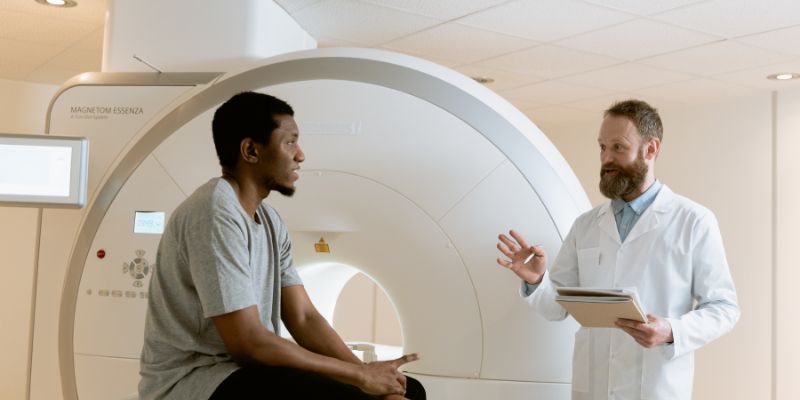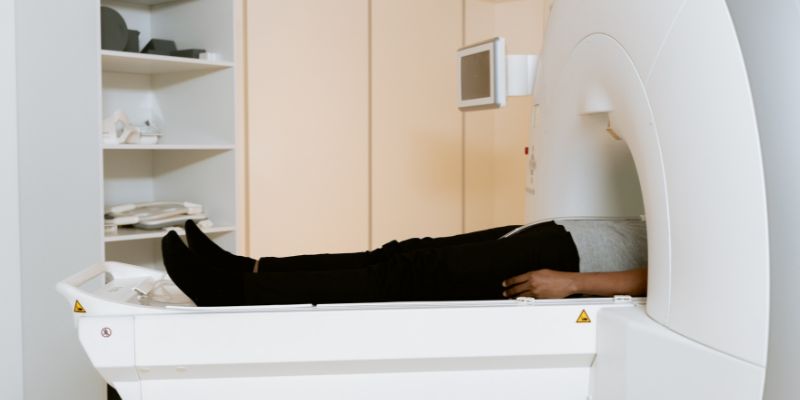This neurodegenerative illness affects a significant number of individuals, with a prevalence that often emerges in latter stages of life. However, it has garnered considerable attention as a prominent health concern. Obtaining a prompt and precise diagnosis is of utmost importance. This not only facilitates those affected by the condition to acquire more knowledge about their ailment, but it also paves the way for preventive interventions that have the potential to impede the progression of the disease and enhance the overall well-being of patients.
Understanding Parkinson's Symptoms

Certain symptoms of Parkinson's disease (PD) exhibit varying degrees of perceptibility. The primary motor symptoms are tremors, rigidity, and bradykinesia, which refers to a decrease in movement speed. The manifestation of these symptoms often occurs gradually, with their severity differing across individuals.
- Tremors
- Rigidity
- Bradykinesia
It is important to differentiate the non-motor symptoms, which include mental and emotional difficulties, from the motor symptoms. The capacity to discern these distinctions is crucial for accurate diagnosis and personalized treatment strategies. The first step in effectively managing Parkinson's disease is the identification and acknowledgment of the early indicators.
The Challenges of Diagnosis

It can be difficult to identify this disease. The absence of a completely reliable diagnostic test is a significant obstacle. The diagnosis relies more heavily on clinical observation and symptomatology than on specialist blood tests or imaging modalities.
The challenge is compounded by the similarity of Parkinson's disease symptoms to those seen by other neurological disorders. Consequently, the inclusion of a comprehensive evaluation conducted by a neurologist or a specialist in movement disorders is often included into the diagnostic procedure for PD. In order to establish a diagnosis, medical practitioners use a comprehensive approach that involves conducting clinical exams, gathering the patient's medical history, and systematically ruling out other potential reasons. Notwithstanding these challenges, it is essential to accurately and promptly diagnose Parkinson's disease in order to initiate appropriate treatment expeditiously.
Clinical Examination for Diagnosis
The diagnosis requires a comprehensive clinical evaluation conducted by a proficient medical professional, often a neurologist or a specialist specializing in movement disorders. To facilitate the diagnosis of PD and exclude other causes for motor symptoms, this assessment encompasses a thorough examination of many criteria.
Detailed Description of the Neurological Examination
Initially, the examiner seeks for the characteristic manifestations of Parkinson's disease, including tremors, muscular rigidity, and bradykinesia (reduced speed of movement). Major sign of PD is tremor, leading to meticulous observation of the patient's resting motions. Assessing the firmness and opposition encountered in various muscle groups is a method for gauging muscular rigidity. Due to the potential influence of PD on reflexes and balance, individuals with PD are also subjected to screening for any abnormalities in these areas.
The clinical examination encompasses a broader range of assessments beyond only motor symptoms. The observation of facial expressions in individuals with Parkinson's disease may reveal the presence of a phenomenon known as the "masked face." This phenomenon arises due to the limited range of motion shown by individuals with Parkinson's disease in their facial muscles. The assessment encompasses speech as well, since Parkinson's disease has the potential to induce alterations in voice characteristics, such as diminished volume or articulation difficulties. The assessment of dexterity may be conducted by the execution of precise motor tasks, such as finger tapping or the act of fastening buttons on a shirt.
The Role of a Patient's Medical History
The examination relies heavily on the patient's medical history. The history of symptoms, any neurological disorders in the family, and any possible drug or chemical exposures are all taken into account. The clinical examination is the gold standard for diagnosis, however further tests may be used to confirm a PD diagnosis or rule out other illnesses. An accurate diagnosis and effective treatment are greatly aided by a full assessment of the patient's condition.
Medical Imaging and Diagnostic Tests
Using Imaging Techniques
There are two techniques (i.e., MRI and CT) that play a pivotal role in the diagnostic process. The primary purpose of these scans is to observe the brain and its many constituents. By providing precise visual representations, these images assist medical professionals in eliminating possible etiologies of symptoms resembling Parkinson's disease.
Dopamine Transporter (DAT) Scans
The use of scans targeting the dopamine transporter (DAT) offers a refined and specialized approach to diagnostic procedures. Dopamine plays a pivotal role as a neurotransmitter in the pathogenesis of PD, and its concentrations inside the brain may be assessed by the use of various imaging techniques. DAT scans that demonstrate a reduction in dopamine uptake may provide compelling evidence to support the diagnosis of Parkinson's disease. Although not infallible, it should be noted that some individuals with PD may have normal results on DAT scans, especially during the first phases of the condition.
Medication Response in Parkinson's
Assessing the efficacy of therapy is a crucial aspect in the diagnostic process of Parkinson's disease. One method often used is referred to as the "levodopa challenge." The patient is administered levodopa, a pharmaceutical agent used to replenish dopamine levels within the brain, while concurrently monitoring their symptoms. The diagnosis of PD may be reinforced by a positive response, which is characterized by a notable decrease in motor symptoms such as tremors and stiffness.
However, this strategy is subject to many limitations. The precision of diagnosing parkinsonian illnesses is diminished due to the fact that individuals with atypical forms of the condition may have a favorable response to levodopa treatment. Moreover, the effectiveness of levodopa may diminish with time, complicating the assessment.
Conclusion
To have a complete understanding of PD, it is necessary to get familiar with the procedure that is used to make a diagnosis of the condition. A subset of the motor symptoms that are linked with PD include tremors, muscle stiffness, and reduced reflexes. It is impossible to overstate the significance of receiving a prompt and accurate diagnosis. In addition, the distribution of this information has the potential to promote the development of preventative treatments that are targeted at reducing the course of symptoms and improving general well-being.







